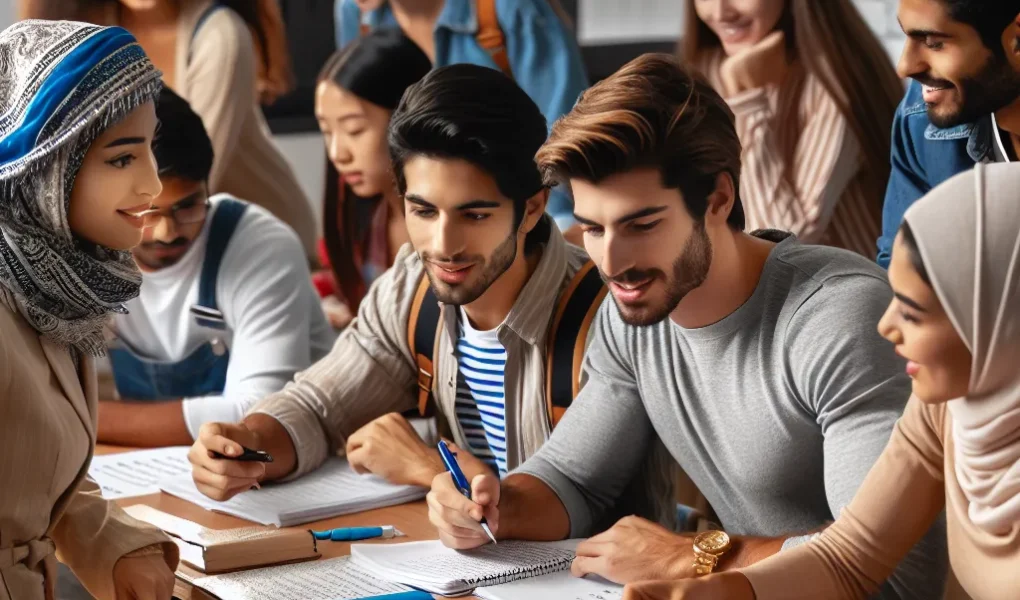Importance of Correction in Second Language Acquisition
Correction plays a crucial role in second language acquisition as it helps learners to improve their language skills and accuracy. One of the key aspects of correction is its importance in providing learners with feedback on their language production. By receiving correction, language learners become aware of their errors and can work on improving their language proficiency.
Moreover, correction contributes to the overall language learning process by helping learners to develop a more accurate and nuanced understanding of the language they are acquiring. It fosters a greater awareness of grammar, vocabulary, pronunciation, and other linguistic elements, ultimately leading to more effective communication.
Furthermore, correction encourages learners to take risks and actively participate in language activities, knowing that they will receive constructive feedback. This creates a supportive learning environment where learners feel motivated to engage in meaningful language practice, leading to enhanced language acquisition.
In addition, correction plays a vital role in preventing fossilization of errors, where learners continue to make the same mistakes without correction. By addressing errors promptly and effectively, educators can help learners avoid the reinforcement of inaccurate language patterns, thus promoting continual progress in language acquisition.
Overall, the importance of correction in second language acquisition cannot be overstated. It serves as a catalyst for improvement, fosters a deeper understanding of the language, creates a supportive learning environment, and prevents the persistence of errors. Effective correction strategies are essential in maximizing the language learning potential of learners.
Strategies for Effective Error Correction in Language Learning
Effective error correction plays a crucial role in second language acquisition, as it helps learners improve their language skills and accuracy. Implementing strategies for effective error correction in language learning can greatly impact learners’ ability to acquire a new language. One key strategy is providing corrective feedback in a timely and constructive manner.
When correcting errors in language learning, it’s important to consider the learner’s level and the nature of the error. For beginners, providing direct correction and explanation can be beneficial, while intermediate and advanced learners may benefit more from indirect correction that encourages self-correction. This approach fosters learner autonomy and metalinguistic awareness.
Another effective strategy is encouraging peer correction and self-correction. Peer correction not only engages learners in the language learning process but also helps them develop a better understanding of the language through interaction and collaboration. Self-correction, on the other hand, promotes critical thinking and self-assessment skills.
Furthermore, integrating error correction into communicative tasks and activities can create a supportive and interactive learning environment. Learners can learn from their mistakes while engaging in meaningful language use, making the correction process more relevant and memorable.
In conclusion, effective error correction strategies in language learning should be tailored to the learners’ proficiency levels and the specific language skills being targeted. By implementing timely, constructive, and tailored error correction strategies, educators can facilitate a more effective and empowering language learning experience for learners.
The Impact of Corrective Feedback on Second Language Development
Corrective feedback plays a crucial role in the development of second language proficiency. It serves as a tool for language learners to recognize and rectify their errors, ultimately contributing to their language acquisition process. Numerous studies have investigated the impact of corrective feedback on second language development, exploring its effectiveness in different learning contexts.
Research suggests that various types of corrective feedback, such as explicit correction, recasts, and clarification requests, can have different effects on language acquisition. For instance, explicit correction provides learners with direct information about their errors, aiding in the consolidation of correct forms. On the other hand, recasts, which rephrase learners’ erroneous utterances without explicitly pointing out the mistakes, promote implicit knowledge development.
Moreover, the timing and frequency of corrective feedback also play a significant role in its impact on second language development. Immediate feedback following an error allows learners to immediately process the correct form, while delayed feedback may hinder the consolidation of the correct language forms.
In conclusion, the impact of corrective feedback on second language development is multifaceted, encompassing various types, timing, and frequency. Understanding the nuances of corrective feedback can empower language instructors to provide effective support for language learners in their journey towards proficiency.
Error Correction Techniques in Language Teaching
One of the key aspects of language teaching is error correction, which plays a crucial role in enhancing second language acquisition. Error correction techniques in language teaching aim to help learners identify and rectify their language mistakes effectively. There are various approaches to error correction, including implicit correction, explicit correction, and peer correction. Implicit correction involves subtly indicating an error without directly addressing it, allowing learners to self-correct. Explicit correction, on the other hand, involves directly pointing out the error and providing the correct form. Peer correction encourages learners to identify and correct each other’s errors, fostering a collaborative learning environment. Each of these techniques has its benefits and can be strategically employed based on the learners’ proficiency level and the learning context.
The Role of Error Correction in Improving Language Proficiency
Error correction plays a crucial role in improving language proficiency in second language acquisition. When learners make errors in their speech or writing, receiving timely and accurate correction can significantly contribute to their language development. Research has shown that providing targeted error correction can lead to greater accuracy and fluency in the long run. However, the effectiveness of error correction depends on various factors, such as the type of error, the learner’s proficiency level, and their individual learning style.
It is important for language teachers to strike a balance in error correction, as excessive correction may lead to demotivation and hinder communication, while too little correction might result in fossilization of errors. Therefore, providing feedback that is specific, constructive, and tailored to individual needs is essential. Different approaches to error correction, including explicit correction, elicitation, and metalinguistic clues, can be employed based on the language learning context and the learner’s preferences.
Moreover, error correction should be integrated into communicative activities to ensure that learners can apply the corrected forms in meaningful contexts. By addressing errors in a supportive and non-threatening manner, instructors can create an environment where learners feel comfortable taking risks and experimenting with the language. Ultimately, effective error correction not only improves language accuracy but also fosters learners’ confidence and motivation in their language learning journey.
Enhancing Second Language Learning Through Effective Correction
Effective correction plays a crucial role in enhancing second language learning. When learners receive clear and constructive feedback on their language errors, they are better able to understand and internalize the correct forms and usage. One of the key aspects of effective correction is providing timely feedback that is tailored to the individual learner’s needs. This personalized approach helps address specific weaknesses and allows the learner to make targeted improvements.
In addition to individualized correction, providing opportunities for learners to apply the corrected language in context is essential for solidifying their understanding. This can be achieved through engaging activities, communicative tasks, and meaningful interactions where learners are encouraged to use the language they have been corrected on.
Furthermore, it is important to create a supportive and non-judgmental environment where learners feel comfortable making mistakes and receiving correction. This fosters a positive attitude towards error correction and language improvement. When correction is viewed as a natural and constructive part of the learning process, learners are more likely to take risks and actively engage in language practice.
In conclusion, effective correction is a powerful tool for enhancing second language learning. By providing personalized feedback, opportunities for application, and a supportive environment, educators can significantly contribute to the language development of their learners.


